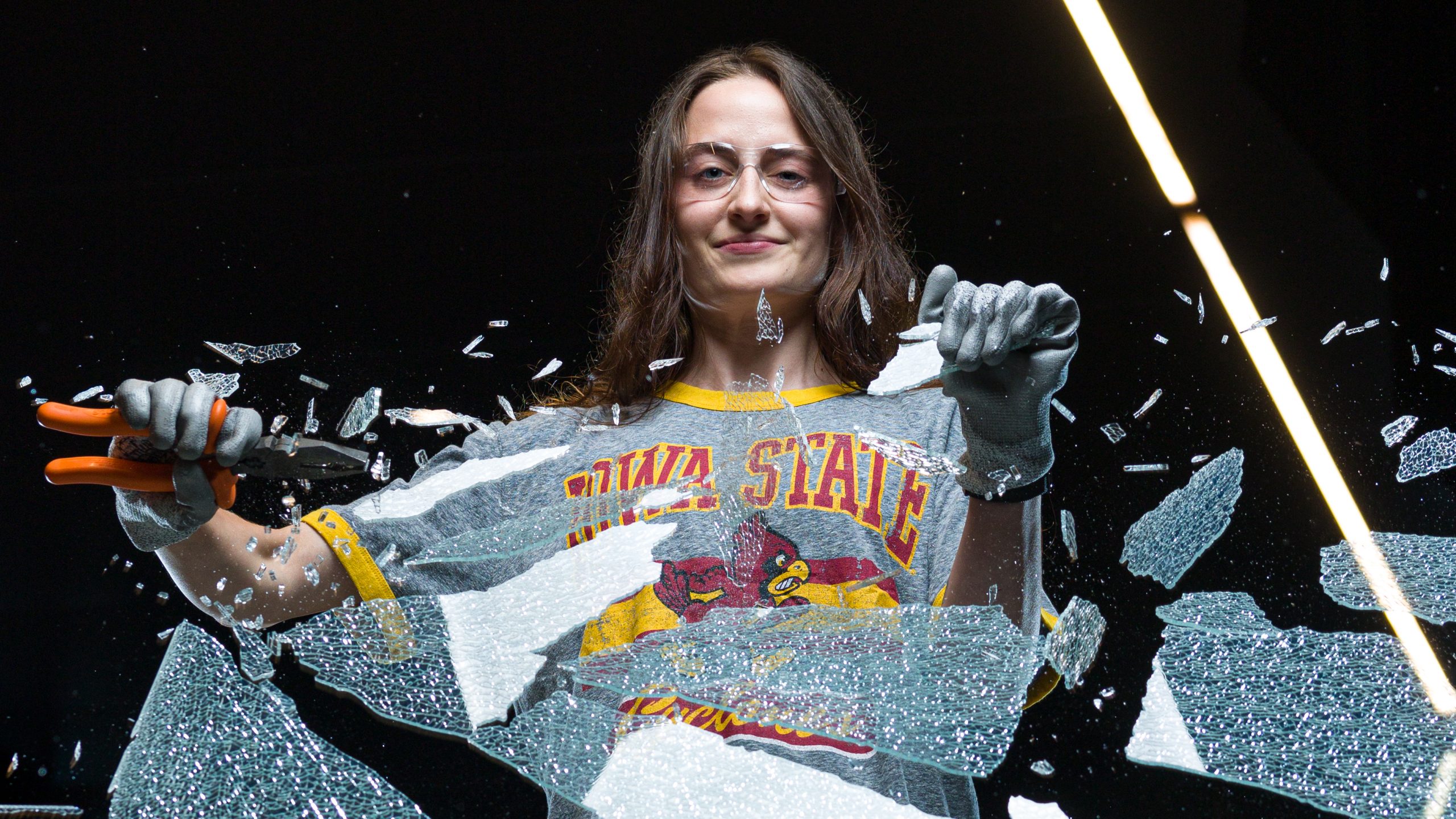How shattered glass became Masha Lebedeva’s clear path to materials science and engineering
Author: Rory McDermott
Author: Rory McDermott

“I was at a materials engineering demonstration and they brought in a huge sheet of glass, putting it between two chairs. They stood on it, and they bounced on it – and it wouldn’t break. Then, they grabbed pliers, and gently cracking the corner, the entire thing shattered.”
As the glass broke, Masha Lebedeva had a breakthrough of her own.
“I realized ‘yes, materials engineering is exactly what I was looking for.’ I just didn’t know it was there.”
Lebedeva was eager to learn more about what constitutes materials science and engineering. The more she learned, the more she liked the focus on understanding the fundamental ways materials work and the strong feeling of community in the department.
“A lot of other engineering disciplines deal with mass components, or how an entire system works together. In materials engineering, it’s really talking about the structure and properties of materials and how that relates to what they can be utilized for.”
“I really enjoyed the smaller scale because you get to understand at an atomic level, why does a rubber band stretch? Why does glass shatter the way it does, and a metal bend? A lot of my inspiration came from MSE professors and my fellow materials engineering majors. You can tell that they really care and love what they’re doing – and it shows.”
Lebedeva formed a passion for metals during a Boeing Undergraduate Research Excellence in Engineering Program research fellowship with Jun Cui, associate professor of materials science and engineering. Hands-on experience studying shape memory alloys has led to continued research at the U.S. Department of Energy’s Ames National Laboratory.
“Shape memory alloys can change shape if you apply energy. Let’s say you have a spring that’s wound up and then you place it in hot water or apply a current to it – it will straighten itself out. If you take that energy source away, it’ll shrink back to its original shape. So, it’s like a shape shifter, if you will.”
An internship in New Mexico last summer fueled Lebedeva’s focus on research and development. Lebedeva is now working towards her concurrent master’s degree as she feels she’s only scratching the surface of the materials engineering field.
“The concurrent program is really good for students who want to learn more. Basically, you start grad school your senior year, so you only add one more year of school. The Department of Material Science and Engineering does a very smooth job with the transition process.”
Through Iowa State communities like the Materials Advantage Club, the Russian-Speaking Students Association, and even the Skydivers Club, Lebedeva is not only learning what materials are made of – she’s learning what she’s made of.
“Materials engineering isn’t necessarily what I expected it to be, but I grew to really love it. It’s one of those things that you never know until you try.”
“Look up YouTube videos about materials science and engineering to see what it’s about. Go to the Materials Science and Engineering office. There will be many people willing to help answer your questions, give you a lab tour, and help you get your journey started in materials engineering.”
Want to find out what materials science and engineering is made of? Check out the program’s website here.